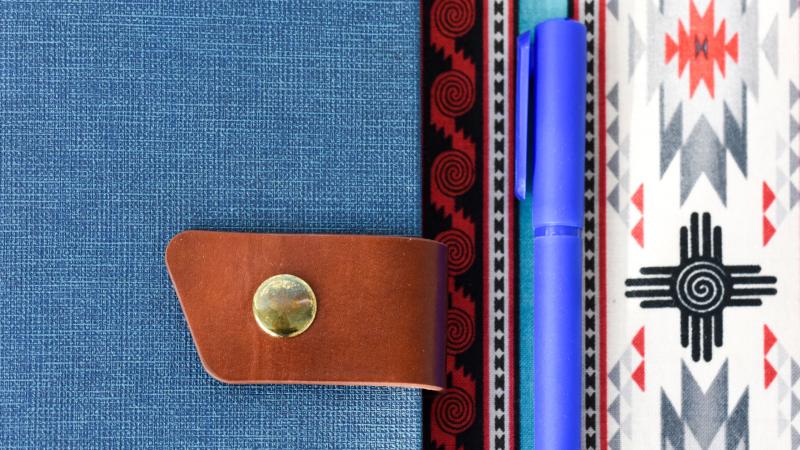Emergency planning: How to make a "grab and go" bag
What is a "grab and go" bag?
A grab-and-go bag is a pre-packed bag that contains essential items that you might need in case of an emergency or disaster. The contents of the bag may vary depending on your needs and the situation.
If a community or medical evacuation is announced, please remember to bring:
- medical cards for each member of the family
- status cards
- medications for 1 week

3 tips for preparing the "grab and go" bag
Did you know?
- The “grab and go” bag should be put together seasonally and according to each individual’s needs.
- It is recommended that you never allow the amount of medication you have on hand to fall below a 10-day supply.
- Remember to bring your cell phone with charger and battery.
What to put in your "grab and go" bag
The following items should be in your “grab and go” bag:
- Water (1 liter per person)
- Food for 12-hour period (non-perishable ready-to-eat foods, high energy bars, meal replacement drinks, etc.)
- Cell phone, cell phone charger and battery
- Crank or battery-operated flashlight, with extra batteries
- Photocopies of important documents (medical and vaccination records, health card, status card, birth certificate, prescriptions, insurance policies, bank account information, phone numbers of family members)
- Seasonal change of clothes (2-3 sets for each person in the family)
- House keys
- Cash (coins & bills)
- Basic first aid kit (one per family)
- Medication
- Personal items (soap, toothbrush, toothpaste, feminine hygiene products deodorant, etc.)
- Paper and pen for writing
- If you have a pet – have food and a leash/carrier for your pet
- Special needs items – wheelchairs, insulin testers and kits, glasses, hearing aids and extra batteries etc. (NOTE: while these items would not be in a “grab and go” bag because they are used daily, keep them easily accessible and take them if you have to evacuate)
VIDEO: Build an emergency kit
(A flooded highway is shown from a drone.)
(Music starts.)
Disasters can strike at any time, anywhere, including in your community.
(An orange circle icon of a cloud with lightning appears.)
Whether you need to leave your home or shelter in place, having a proper emergency kit that is portable and easy to find will ensure you have what you need to keep your household safe.
(The icons spins and transitions to a still image of the outside of a house.)
(A magnifying glass appears over the house and reveals an icon of an emergency kit.)
(The magnifying glass moves offscreen.)
In this video, we will look at what you need to build an emergency kit.
(A yellow circle appears in the middle of the screen, then fills the screen. Text appears, and an orange circle bounces behind it.)
(ONSCREEN TEXT: Build an emergency kit.)
(Text and orange circle move offscreen)
In an emergency, basic services like your water, electricity, gas and phone service may not work.
(Transition to a slow-motion video of a tornado.)
(4 icons appear: a faucet, a power cord, a gas pump and a phone. Each icon is then crossed out.)
An emergency kit can provide essential necessities for you and your loved ones.
Water is important for drinking, cooking and sanitation.
(Transition to a photograph of several water bottles.)
You will need about four litres per person, per day. Include small bottles that can be carried easily.
(ONSCREEN TEXT: 4 litres per person, per day)
You will also need food. Use some that won't spoil.
(Transition to a yellow screen. Four cans of food and two granola bars pop up.)
Include a manual can opener and add items like baby formula and pet food if you need them.
(A manual can opener also appears onscreen, as well as a circle with a checkbox in it. The box is checked off.)
(Three jars of baby food and a bottle appear onscreen.)
You may lose power in an emergency. Your kit should include a flashlight and a radio to stay informed.
(Transition to a black screen. A flashlight appears and turns on, casting yellow light on the now orange background.)
(Two types of portable radios pop up in the light.)
Pack extra batteries, or buy the kind that can be manually powered.
(Items disappear from screen and the screen transitions to yellow.)
You will also want chargers for your mobile devices. If you lose electricity or cellular networks are down, your cordless home phone or mobile device may not work.
(An orange circle appears in the middle of the screen. A phone and battery icon are drawn in the circle.)
Consider having a phone with a cord just for emergency use.
(The phone and battery disappear and are replaced with an icon of a corded phone.)
Your emergency kit wouldn't be complete without a first aid kit. It should include the basics like bandages, antiseptic wipes, protective gloves, pain relievers, and face masks.
(Transition to a still image of a mask, safety pins, bandages, scissors, medicine, wipes, and gloves. A checkmark appears on the items as they're mentioned.)
Now let's look at some items that may be less obvious. It may be difficult to get prescription medications during or even for a while after an emergency.
(Transition to a still image of several prescription bottles. An icon of a pill appears onscreen.)
If possible, include enough medication to last a couple of weeks. Also consider what specialized equipment may be needed for family or household members with limited mobility or special needs.
(The pill icon fills the screen and appears inside a calendar to cover two and a half weeks.)
It may also be difficult to get cash from banks. If possible, have enough to cover your basic needs for a few weeks.
(Transition to a still image of a pile of cash and change.)
Lastly, keep copies of important documents like birth certificates, wills, passports and insurance policies in your kit.
(Transition to a background of orange file folders with a yellow circle in the middle. Two passports and drivers' licenses are inside the circle.)
Remember to include a copy of your emergency plan, plus contact information for friends and family who may be able to help.
(A person is holding a pen and pointing at an emergency plan.)
Keep your emergency kit ready by replacing any items that might expire like food, water, batteries and medications, at least once a year.
(Transition to an orange screen. Icons appear in yellow circles: a battery, food, and medication.)
It may seem like a lot, but you probably already have many of the items you need. Print off an emergency kit checklist and the next time you're running errands, pick up a few items to add. Or you can buy a prepackaged kit
(Icons disappear and are replaced with a yellow screen. Several items pop up onscreen: A radio, a blanket, water bottles, a first aid kit, a flashlight, cans, a fire extinguisher, medication, a utility knife, a lantern.)
It's everyone's responsibility to ensure your household is prepared in case of an emergency. With a little preparation, you can be ready for anything.
(A family stands outside their home. An icon of an emergency kit appears beside them.)
Get started at GetPrepared.ca.
(ONSCREEN TEXT: Get started at GetPrepared.ca)
(Government of Canada wordmark)
Explore more

The best way to help ensure your family's safety in an emergency is to have an emergency plan.
Yâkwâmi Fire Info-Line
Get answers to questions about wildfires in Eeyou Istchee or Cree Health Board recommendations to protect your health during the fire season.
The service is available Monday to Friday, 9 am – 5 pm.
Wiichihiiwaauwin (Mental Health) Helpline
Service available 24/7. Cree speakers and Elders are available upon request


